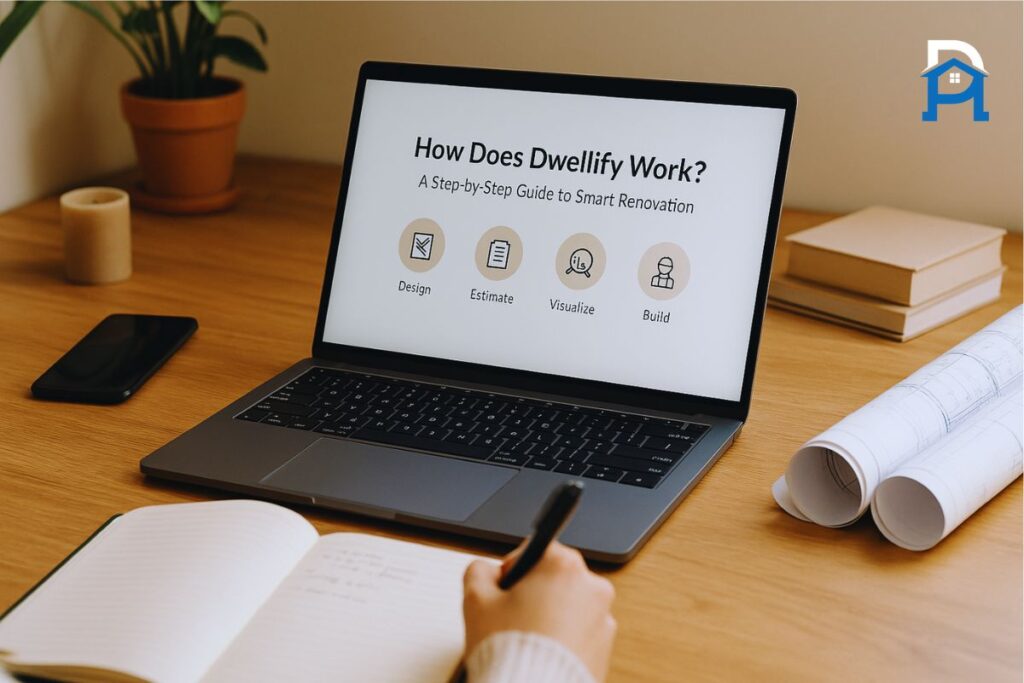So you’re planning a kitchen renovation and wondering, “Do I really need a permit for this?” Don’t worry—you’re not the only one. When I started remodeling my own kitchen last year, I asked the same question. I thought, “I’m just changing cabinets and adding new lights, how complicated could it be?” Well, here’s the thing: depending on what you’re doing, permits can be a must-have.
Permits aren’t just about paperwork; they’re about making sure your kitchen is safe, legal, and future-proof. Skip them, and you could face fines, delays, or even issues when you try to sell your home later. But here’s the best part: once you understand the rules, the process isn’t as scary as it sounds.
Snippet-Ready Definition
You often need a permit to renovate a kitchen if you’re moving walls, plumbing, or wiring. Minor updates like painting or replacing cabinets usually don’t—but rules vary by city, so always check locally.
In this guide, I’ll walk you through exactly when you need a permit, when you might not, why permits matter, how the process works, and even some personal tips from my own renovation journey. By the end, you’ll feel confident about tackling your project the right way.
Mission Statement
Our mission is to provide homeowners with clear, trustworthy, and practical guidance on kitchen renovation permits. We believe every remodel should be safe, code-compliant, and stress-free, helping you avoid costly mistakes while creating the kitchen of your dreams.
When You Usually Need a Permit for a Kitchen Renovation
Let’s start with the big one: yes, many kitchen projects do require permits. But not everything does. If you’re changing the guts of your kitchen—the structure, plumbing, or electrical system—you’ll almost always need one.
- Structural changes: Planning to knock down a wall to open your kitchen into the living room? That’s a big yes on permits. Anytime you touch load-bearing walls or alter windows and doors, the city wants to make sure your house won’t collapse.
- Electrical upgrades: Adding new outlets for your fancy espresso machine, or moving the stove plug? These changes require an electrical permit to make sure everything meets safety codes.
- Plumbing modifications: If you’re moving your sink to the kitchen island or rerouting water lines, you’ll need a plumbing permit. Same goes for installing a new dishwasher where one didn’t exist before.
- Mechanical and ventilation work: Replacing your range hood with one that vents outside? Adjusting HVAC ductwork? Those changes often need a mechanical permit.
- Gas appliances: Installing a gas stove or moving gas lines is serious business and always requires a permit for safety reasons.
- Full gut renovations: If you’re stripping the kitchen down to studs, you’ll need multiple permits—structural, electrical, and plumbing.
Here’s a personal example: when I upgraded my old kitchen, I thought I’d just replace the sink and add an island. Turns out, moving the sink two feet required a plumbing permit, and adding pendant lights over the island required an electrical permit. Small changes, big permit list!
When You Might Not Need a Permit (Exempt Renovations)
Now, here’s some good news. Not every kitchen upgrade requires you to deal with city hall. If you’re sticking to cosmetic updates, you’re usually safe without a permit.
- Painting walls or cabinets: Go wild with that trendy sage green or classic white—no permit needed.
- Replacing countertops: As long as you’re not moving plumbing or electrical, you can swap granite for quartz without paperwork.
- Cabinet updates: Refacing, repainting, or replacing cabinets in the same spot usually doesn’t require permits. (This covers our related keyword: does replacing kitchen cabinets require a permit).
- Flooring: Hardwood, tile, vinyl—change it up however you like, no permits needed.
- Small fixture swaps: Replacing a faucet, sink, or light fixture in the same location often doesn’t require approval.
But guess what? Sometimes homeowners assume too much. A friend of mine replaced a kitchen sink, thinking it was just a simple swap. But because the new sink was a deeper farmhouse style and needed new plumbing hookups, the inspector later flagged it. Moral of the story? If in doubt, check first.
Why Permits Matter — Safety, Legal, and Financial Reasons
Here’s the thing: permits aren’t just red tape. They exist for your protection.
- Safety: Building codes make sure electrical wiring doesn’t overload, plumbing doesn’t leak, and structures can handle the weight. Skipping permits means skipping safety checks.
- Legal protection: If the city finds out you remodeled without a required permit, you can face hefty fines or be forced to undo the work. (Yes, really—I know a guy who had to rip out his brand-new cabinets because wiring wasn’t permitted.)
- Resale value: When you sell your home, buyers and appraisers look for records of permitted work. No permits = suspicious eyes.
- Insurance coverage: Imagine a kitchen fire caused by unpermitted electrical work. Your insurance company might refuse the claim.
A real-world case: I once read a thread where a homeowner remodeled without permits, and when he went to refinance, the bank wouldn’t approve until he got the work inspected. He ended up paying double—once for the work, and once for fines and re-inspections. Ouch.
(Here’s where we naturally cover the LSI keyword: what happens if you don’t get a permit for a kitchen remodel.)
How the Kitchen Permit Process Works (Step by Step)
Okay, so you’ve realized you need a permit. Now what? Here’s how it typically goes:
- Plan your project: Write down what you’re changing. Are you moving the sink? Adding outlets? Knocking down a wall? The clearer your scope, the easier the permit process.
- Check with your local building department: Visit their website or give them a call. Most cities have a checklist of what needs permits.
- Prepare documents: Larger projects may require drawings, contractor details, or even stamped architectural plans.
- Submit your application: Fill out the forms and pay the fee. (In my case, my plumbing permit cost about $150, while electrical was another $200.)
- Wait for approval: This can take anywhere from a few days to a few weeks, depending on how busy your city is.
- Inspections: As the work progresses, inspectors will visit to check wiring, plumbing, or framing. Don’t worry—they’re usually friendly and just want to ensure safety.
- Final sign-off: Once you pass inspections, your permit is closed, and you’ll have official records for your project.
Pro tip: If your permit gets denied, don’t panic. It usually means the city needs more info, like better drawings or a small design tweak.
Permit Requirements Vary by Location
Here’s something many people forget: permit rules are local. What’s okay in Florida may not fly in California.
- California: Strict codes. Almost any plumbing or electrical change needs a permit.
- Florida: Strong focus on hurricane safety, so ventilation and structural changes are closely monitored. (That’s where do you need a permit to remodel a kitchen in Florida fits in.)
- New York / New Jersey: Heavily regulated. Even bathroom remodels often need permits. (do you need a permit to remodel a bathroom in NY/NJ).
- Other states: Some allow exemptions if the project cost is under a certain threshold.
When I remodeled, my city required permits for things I didn’t expect (like adding recessed lighting). But a friend in a nearby town didn’t need them for the same thing. Moral? Always call your building department first.
Special and Less-Discussed Scenarios
Not all kitchens are the same, and some situations need extra care:
- Historic homes: If your home is in a preservation district, you may need approval from a historic board before you touch anything.
- Condos and HOAs: Even if the city doesn’t require a permit, your HOA might. Some condos require board approval for any work involving plumbing or electrical.
- Bundled permits: Some cities allow one combined permit that covers electrical, plumbing, and structural—saves time and money.
- Permit renewals: Projects that drag on longer than expected may need permit extensions, which can cost extra.
Common Mistakes Homeowners Make
Let me be honest—I made a few mistakes myself. Here are the most common ones I’ve seen (and sometimes lived):
- Assuming “small” means “no permit”: A tiny sink move or outlet change can still need approval.
- Starting work before approval: Don’t do this. Inspectors can order you to stop, and you’ll lose money.
- Trusting contractors blindly: Some contractors say, “Don’t worry, we’ll skip the permit to save time.” Big red flag.
- Forgetting inspections: Even if you get the permit, skipping required inspections can invalidate it.
- Not planning for delays: Permits take time. Build a buffer into your schedule.
Costs and Time Factors with Permits
Let’s talk money and time—two things everyone worries about.
- Permit costs: They vary widely. Small plumbing permits can be under $100, while large kitchen remodel permits can run $500–$1,500 depending on your city.
- Timeline: Getting permits approved can take a few days or up to a month. Inspections add time too.
- Tips to save time: Hire a contractor familiar with your city’s codes, have complete drawings, and apply early.
For my remodel, permits added about three weeks to the timeline and $350 in fees. Was it annoying? Sure. But having the peace of mind that everything was safe and legal? Worth every penny.
Comparison Table (Permit vs No Permit)
| Renovation Task | Permit Needed | Notes |
| Knocking down a wall | ✅ Yes | Structural changes always require permits |
| Moving sink or plumbing lines | ✅ Yes | Plumbing permit required |
| Installing new gas stove | ✅ Yes | Gas line permit needed |
| Replacing cabinets in same spot | ❌ No | Cosmetic update, no permit needed |
| Painting, backsplash, flooring | ❌ No | Surface-level changes, permit-free |
| Adding new electrical outlets | ✅ Yes | Electrical permit required |
Step-by-Step Guide: How to Get a Kitchen Permit
- Define your project scope (what’s changing).
- Check your city’s building department website or call.
- Prepare drawings, contractor details, and documents.
- Submit application + fees.
- Wait for approval (days to weeks).
- Schedule inspections (rough-in, mid, final).
- Get final approval and keep records.
FAQs
Do you need a permit to replace kitchen cabinets?
Usually no, if you’re replacing cabinets in the same spot. But if moving them involves electrical or plumbing changes, you’ll likely need a permit.
What happens if you don’t get a permit for a kitchen remodel?
You may face fines, stop-work orders, or even be forced to undo the work. It can also hurt insurance claims and future resale value.
Do you need a permit to remodel a kitchen in Florida?
Yes, for plumbing, electrical, and structural work. Florida building codes are strict due to safety regulations. Cosmetic upgrades often don’t need permits.
Do I need a permit to replace a kitchen sink?
If you’re replacing a sink in the same location with no plumbing changes, usually no. But moving or adding new plumbing lines requires a permit.
Do you need permits to remodel a bathroom or kitchen in NY/NJ?
Yes. New York and New Jersey often require permits for plumbing, electrical, or layout changes in kitchens and bathrooms.
Conclusion
So, do you need a permit to renovate a kitchen? In most cases—yes. If you’re changing plumbing, electrical, gas, or structure, permits are required. If you’re just painting, swapping cabinets, or changing countertops, you’re usually fine without one.
Here’s my advice as someone who’s been through it: always check with your local building department before you start. It takes a little time, but it protects you from headaches down the road. Permits ensure safety, protect your home’s value, and give you confidence that your dream kitchen is built to last.
At the end of the day, a kitchen renovation is exciting. Don’t let permits scare you—they’re just part of doing things the right way. And trust me, when you’re cooking in your beautiful, safe, code-approved kitchen, you’ll be glad you did it by the book.
Disclaimer
This article is for informational purposes only. Permit requirements vary by location. Always consult your local building department or a licensed contractor before starting renovation projects to ensure compliance with current laws and codes.

I’m Bilal, the founder of this site dwellifyhome.com and a home remodeling expert. From décor ideas and renovation tips to smart solutions for everyday comfort, our goal is to make your home more beautiful, functional, and inspiring. We’re here to share practical advice and fresh inspiration for every corner of your house.




